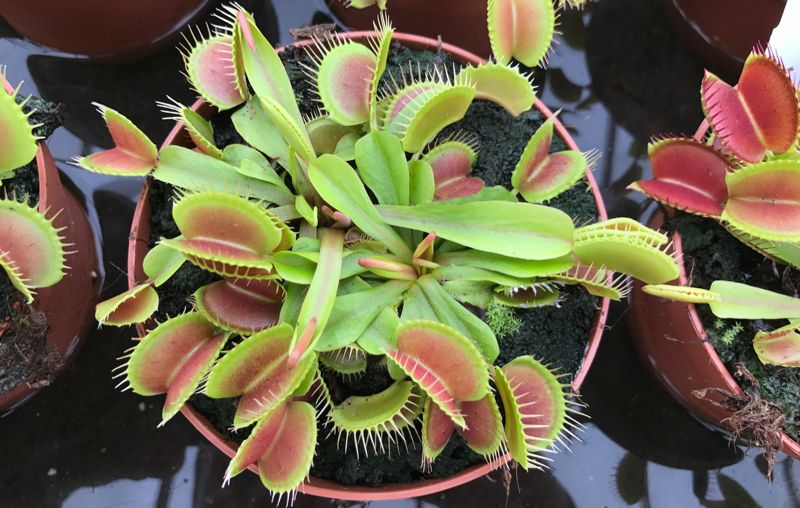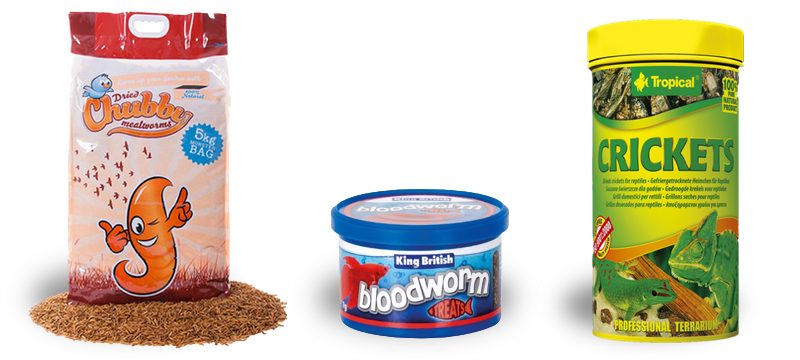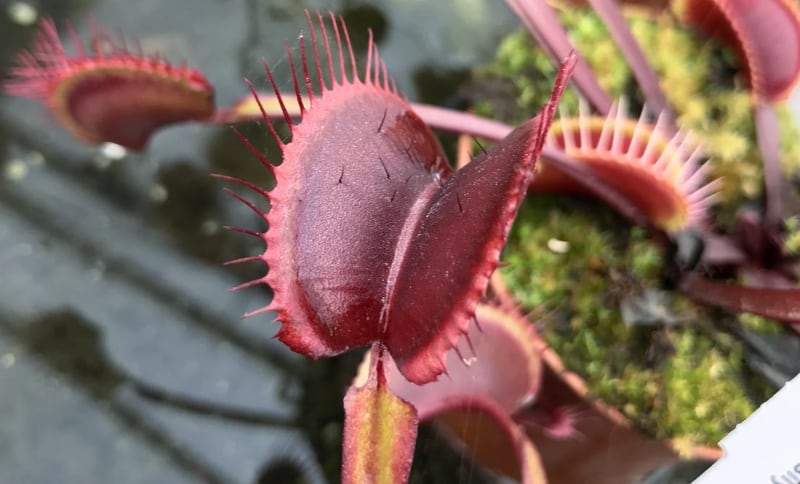Feeding a Imature Venus Fly Trap

FAQ: What should I feed my Venus flytrap?
26 April 2017
Short Answer
Probably nothing… yet.
If you want your Venus flytrap to be happy and grow big colourful traps, there are lots of things you should do before thinking about what to feed it for dinner.
It might sound boring, but your little plant will be much healthier with proper watering, lots of bright sunlight, and - in the longer run - a cold winter dormancy than with bits of food being dropped into its traps.
Once you've taken care of their basic growing requirements - or if you simply can't wait any longer - read on…
Fun Answer
Venus flytraps are cool, and feeding them is fun. What's more, even the healthiest plant will eventually slow down its growth if it doesn't catch any prey. If your plant lives outdoors, or if you can put it outside on sunny days, then it will catch all the food it needs without your help. But if you really want to feed your plant yourself, then there are 5 important things to bear in mind:
-
Don't give your plant anything it wouldn't catch naturally. That means no chocolate, chicken, or other human food. Bugs only!
-
Don't give your plant fertiliser or any other normal 'plant food' - like most carnivorous plants, they prefer to grow in nutrient-poor soil.
-
Closing a trap requires a lot of energy, so don't trigger them if you aren't feeding them. For the same reason, don't overfeed your plant - one trap per week is more than enough.
-
Don't feed your plant anything that's larger than about 1/3 the size of the trap - it needs to fully seal to digest its meal, and so prey which is too large may rot the trap, causing it to turn black.
-
Digestion only starts if the trap's trigger hairs are stimulated after it has closed. If you're using a dead bug, use a toothpick or cocktail stick to gently 'tickle' the hairs through the gaps after the trap's closed over the prey. It'll soon seal shut.
Next up, the menu!
The best foods for your Venus flytrap:

-
Mealworms: These small freeze-dried worms are a nutritious food source for Venus flytraps which you can buy from many pet shops and reptile specialists. Small tubs are available for around £5, and these contain enough food for dozens of plants to be fed for many years. Mealworms can sometimes be too big for flytrap seedlings , so for smaller plants, you may have to cut a worm into an appropriately sized piece. Simply rehydrate the worm with a few drops of water, soak up any excess water using kitchen roll, then pop it into the trap. Use your cocktail stick to gently touch the trigger hairs as described above. Yum!
-
Bloodworms: Their name may be disgusting, but these tiny freeze-dried worms can be a great food source for Venus flytraps. They are cheap, nutritious, and can be bought at most pet shops and aquariums. You can buy a small pot for just a few pounds. Simply take a small pinch of dried worms, rehydrate them with a few drops of water, and soak up any excess water using kitchen roll. Then, using a toothpick or cocktail stick, separate out a little 'meatball' which is about a 1/3 the size of the trap. Pop it in, then use your cocktail stick to gently touch the trigger hairs as described above.
-
Crickets: If you can find dried crickets that are suitably small, they make a fine snack for adult Venus flytraps. Tubs of dried crickets are typically available for about £5. Simply pop one into each trap, making sure that its antennae won't poke out and prevent a complete seal. You can stimulate the trigger hairs with a cocktail stick or toothpick, or by very gently squeezing the sides of the trap.
All three of these foods are suitable for other carnivorous plants as well as Venus flytraps (Dionaea muscipula). Bloodworms are ideal for almost all species, particularly sundews (Drosera) and butterworts (Pinguicula), while mealworms and crickets are often good for larger pitcher plants (Sarracenia and Nepenthes).

How often should you feed a Venus flytrap?
If you've taken care of all its other needs, you can safely feed a Venus flytrap every month of the growing season. Simply pop bugs into 3 or 4 large open traps, stimulate the hairs as described above, and your plant will thank you for it!
Do venus flytraps need live food?
While Venus flytraps and other carnivorous plants will gratefully accept live insects, I've found it's rarely worth the hassle. Mealworms have been known to burrow out of traps, and crickets move so quickly they can easily escape. Some growers purchase tubs of live crickets from specialist reptile or amphibian shops and place the container in the freezer for several minutes to 'stun' the bugs, making them easier to feed to their plants. But unless you're insistent on a diet of live food, dried mealworms are often the best option (link).
Whatever you do, don't forget to take care of their other needs first! For that, be sure to read my complete Venus flytrap growing guide or grab a copy of Peter D'Amato's carnivorous plant "bible", The Savage Garden. You might also want to subscribe to my email newsletter below to be notified when I publish my next article.
Happy growing!
comments powered bySource: https://www.carnivorousplants.co.uk/blog/what-should-i-feed-my-venus-flytrap/
0 Response to "Feeding a Imature Venus Fly Trap"
Post a Comment